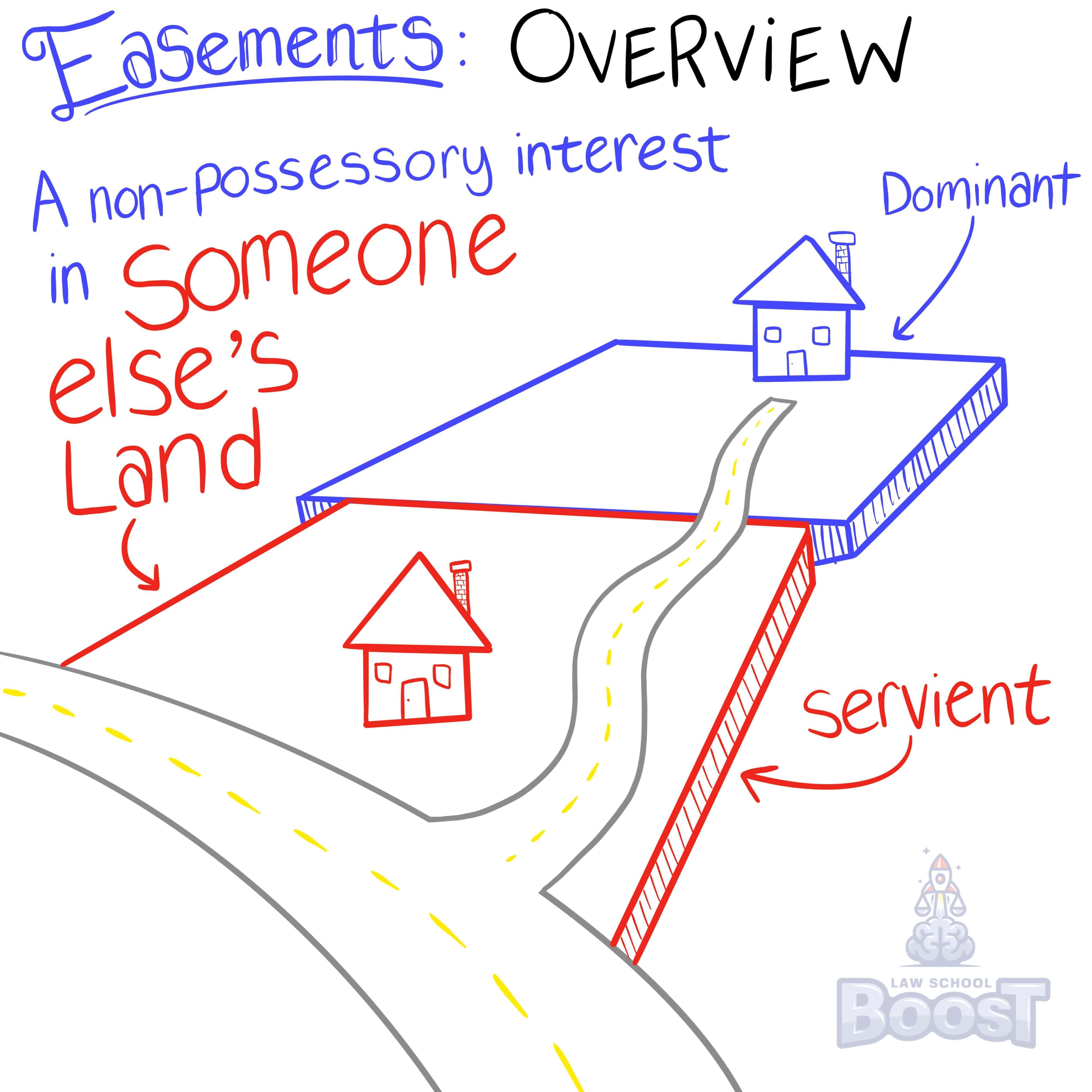😀
Real Property • Easements
PROP#107
Legal Definition
An easement may be implied without preexisting use in two instances: (1) a subdivision plat, which creates an implied easement to use streets to access lots in the subdivision; and (2) a profit, which creates an implied easement to traverse over the surface of land and use it as reasonably necessary to extract product.
Plain English Explanation
Usually, easements are implied when there is preexisting use. However, there are two instances where no such preexisting use is required.
The first is when there is a subdivision plat. In other words, developers will often take a large parcel of land and divide it up into smaller parcels of land to build residential or commercial properties. When this happens, they will also create roads that connect the parcels (after all, what good is a parcel of land if you can't get to it). Thus, there is an implied easement for each smaller parcel to make use of the streets in order for the owners to get to their property.
The second is when there is a "profit a prendre," or profit for short. A profit is an interest in land that gives its holder the right to take something from the land. For example, if you had a property with a bunch of apple trees, you could give someone a profit a prendre to harvest apples from your trees. This obviously requires the person to access and enter your land, which is why profits come with an implied easement to access the land in order to exercise the profit.
The first is when there is a subdivision plat. In other words, developers will often take a large parcel of land and divide it up into smaller parcels of land to build residential or commercial properties. When this happens, they will also create roads that connect the parcels (after all, what good is a parcel of land if you can't get to it). Thus, there is an implied easement for each smaller parcel to make use of the streets in order for the owners to get to their property.
The second is when there is a "profit a prendre," or profit for short. A profit is an interest in land that gives its holder the right to take something from the land. For example, if you had a property with a bunch of apple trees, you could give someone a profit a prendre to harvest apples from your trees. This obviously requires the person to access and enter your land, which is why profits come with an implied easement to access the land in order to exercise the profit.
Visual Aids




Related Concepts
How can an easement be terminated?
How is an easement created?
How is an easement terminated via abandonment?
How is an easement terminated via destruction or condemnation?
How is an easement terminated via estoppel?
How is an easement terminated via prescription?
How is an easement terminated via release?
How is an easement terminated via stated condition?
How is an easement terminated via unity of ownership?
If the holder of an easement misuses it, does the easement terminate?
In assessing an easement, who has a duty to make repairs?
In assessing a property law issue, how may a license become irrevocable?
In assessing a property law issue, what is a license?
What constitutes a valid easement by express grant?
What is an affirmative easement?
What is an easement?
What is an easement appurtenant?
What is an easement by prescription and how is it acquired?
What is an easement in gross?
What is a negative easement?
What is the difference between a license and an easement?
What is the result of a failed attempt to create an easement?
When does an easement by express reservation arise?
When does an easement by necessity arise?
When does an easement by necessity terminate?
When may existing use create an implied easement?


